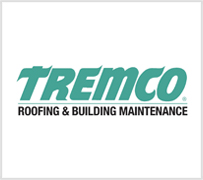
Home / News / Protecting Against High Winds

High winds have the unique ability to get under a variety of roof materials, components and roof-attached equipment. In the summer of 2017, a huge Monsoon storm sent a wind gust under the edges of the roof of the Burton Barr Central Library in downtown Phoenix. The roof lifted just enough to break the sprinkler lines all along one wall. It is taking the library a full year to fix the problem, repair the damage and get back up and running.
The Proper Roof
Naturally, the first solution is choosing the proper roof for the climate and local codes. Making sure the roof is installed correctly is crucial. Even the perfect roofing materials won’t hold up under stress if they’ve been poorly installed. That’s why it is so critical to select a roofing company that has extensive experience, a good reputation and is licensed, bonded and insured.
Wind Protection
Sometimes, you have a property that might not have the ideal roofing material or configuration for possible wind speeds. And even for roofs that are ideal, there are additional steps you can take to protect from high winds. This is particularly true for a number of select single-ply roofing systems.
One of the main types of damage is called peeling. This is where wind can get under the edge of the roofing material and peels it up and away from the underlayment or decking. A peel stop is an easy fix. Basically, a peel stop is a metal strip or pipe that is fastened 12 inches from the edge of the roof. It’ll stop peeling as soon as it starts.
If you are expecting truly severe weather, such as a major hurricane, sandbags set 12 inches from the edge of the roof can also help prevent peeling. Note: It is important to check with a roofer to ensure the roof can support the additional weight. It’s also recommended to make sure this method is allowed by local state roofing codes and emergency preparedness codes.
Another type of damage caused by the wind is when it attacks roof equipment like HVAC or access doors, as well as debris lying on the roof. Loose objects, whether man-made or natural, can cause all kinds of damage when tossed about by wind gusts.
Inspections are Key
Take the time every year to have a proper inspection done. There are key elements and maintenance steps to help protect your roof from high winds. Those steps include:
Note: This information is a general overview and may not apply to all roofing systems, states or building codes. When in doubt, ask a professional roofer to review your roof for wind hazards and to make recommendations based on your state or local codes.











